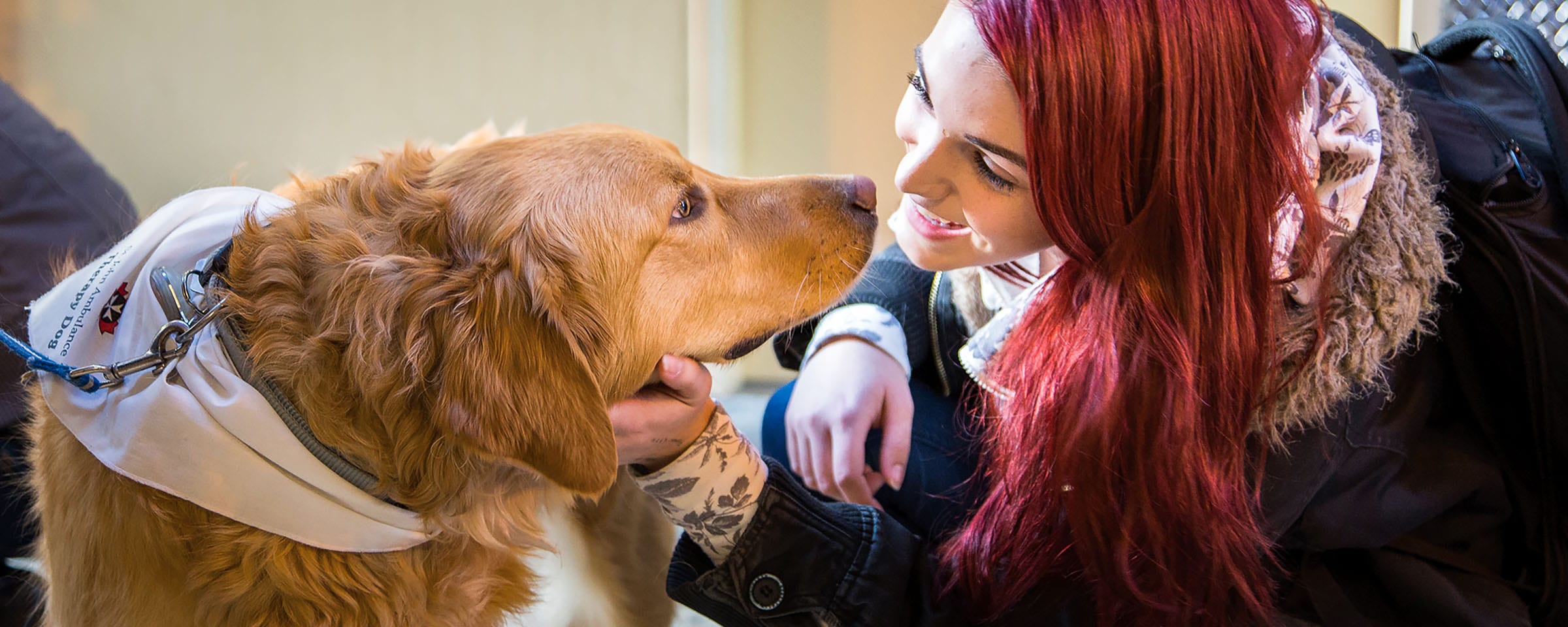Q+A With RRC President Stephanie Forsyth: Part Two
 At Red River College, we value a healthy environment: through promotion of creativity, wellness, flexibility, safety, and sustainable learning. RRC President Stephanie Forsyth is a strong proponent of health, wellness, and life balance.
At Red River College, we value a healthy environment: through promotion of creativity, wellness, flexibility, safety, and sustainable learning. RRC President Stephanie Forsyth is a strong proponent of health, wellness, and life balance.
She recently provided some insight into her personal beliefs, attitudes, and activities on the subject. In addition to elaborating on some of the ways she likes to relax while enjoying precious downtime, Stephanie also shared her thoughts on community, ideas about wellness at the College – and even her favorite snack.
This is the second of a two-part series featuring a Q+A with Red River College’s chief executive.
Missed part one? Read it here.
—–
Q: What are your thoughts about building a “wellness culture” on campus?
A: Wellness is a fundamental part of our strategic plan and calls for the development of healthy environments, which is also one of our stated values. We believe in promoting creativity, wellness and flexibility through a safe and sustainable learning environment.
A healthy work environment can be achieved by taking many small and large steps. One place to start is the way in which we view our physical campuses. The campus master plan which we’ve undertaken is a first step in this work and encourages us to rethink the way we plan and create our learning, teaching and working environments to contribute to the health and wellness of our staff and students. Our newer facilities try to incorporate new approaches, but we will have a real challenge ahead of us at the Notre Dame campus.
College Days in June are another example of the development work underway in an effort to foster and support a wellness culture. This initiative features several wellness-related events, including the Walk-a-thon that raises money for the RRC Employee Dependent Award, a Wellness breakfast, and the softball tournament.
Our dedicated team of Environmental Health and Safety officers, regular lunch-and-learn workshops, and of course numerous internal supports like access to a gym, health centre, Aboriginal Student Support Centre, and diversity events are all examples of wellness initiatives. And one initiative I have really come to appreciate is the fitness tip that appears every day in the all-staff news e-mail; it gives great ideas and reminders on how to take care of ourselves and is a subtle reminder to stay focused on health.
These wellness initiatives are not just taking place at our Winnipeg campuses, the Wellness Committee also strives to encourage activities across the college. We’ve seen some interesting events in places like our Winkler Campus, which ran a recent “Burn the Blues” student-led event in the winter.
We are also looking for ways to enhance wellness for our students. Our wellness-related feedback from students on our “Student Experience Survey” (run in Nov/Dec 2011 and again in March 2012) really helps. This feedback will provide good insight as the College begins to roll out a student wellness strategy in the future. I expect the challenges will be similar – staying active, reducing stress, eating healthy food. We know many students are busy and can be juggling many demands on their time, so finding ways to support student Wellness is important.
Q: How do you connect community involvement with wellness?
A: A theme in our new strategic plan is to fuel Manitoba’s economic growth and community development. For me, that also means participating in healthy, sustainable community development.
Whether that is by participating in the Commuter Challenge in June by riding my bicycle to work to reduce my carbon footprint on the community or by participating in the RRC Rebel Dragons dragon boat team to raise funds for cancer, there is no end of opportunities to get involved in the health and wellness of the community.
I am on a number of different boards, including the Winnipeg Chamber of Commerce, the Premier’s economic advisory committee, and the Manitoba Innovation Council. I am involved with groups that work on poverty reduction, build community, and provide training to the more marginalized such as Urban Circle. These are all worthwhile causes and there are so many more out there. The important thing, in my opinion, is to do something to give back to the community. We are all a part of the community and making a contribution is a gift to all of us.
The Service Learning concept in the new Strategic Plan in intended to support and foster RRC’s engagement in the community and model the importance of community involvement. The possibilities are limitless, whether it’s developing community gardens with local organizations, participating in the Share Our Strength organization’s efforts to fights child hunger, working with others to host Aboriginal Days at the Forks, or sending out project teams of business students to help local businesses. There are many talented people and students working and studying at RRC, with an abundance of skills and knowledge. We have an opportunity — or some might argue a responsibility — to put these gifts to good use to the betterment of others and the community around us.
